
This morning I decided that I needed a heck of a lot more rosemary ... maybe enough for a short hedge around a new bed or 2 that I am planning for next year. But, rather than buying new plants in the spring, I opted to use my current rosemary bushes to create new (free!) plants from cuttings.
Propagating rosemary from cuttings is super easy (much easier than growing rosemary from seed) and it can be a real money saver -- especially if you'd like to live in a world full of rosemary (like me!). You can root rosemary cuttings pretty much any time of the year, but fall and spring are usually the best times to do so. I prefer to take cuttings in the fall and to overwinter them in the house. Then, in the spring, my new rosemary plants will be large and ready for planting outside as soon as possible.
How to Propagate Rosemary from Cuttings ....
Of course, you'll want to ensure that you use a healthy, mature "mother" plant to take the cuttings from, but otherwise, the list of supplies you need to propagate rosemary is pretty basic:
- a rosemary "mother" plant (duh!)
- scissors or pruning shears
- rooting hormone (optional)
- a pencil, skewer, or chop stick
- containers
- planting medium (I used perlite and peat)
Select branches on your mother rosemary plant that are healthy and not too woody. The stems should still be rather green and able to bend easily.
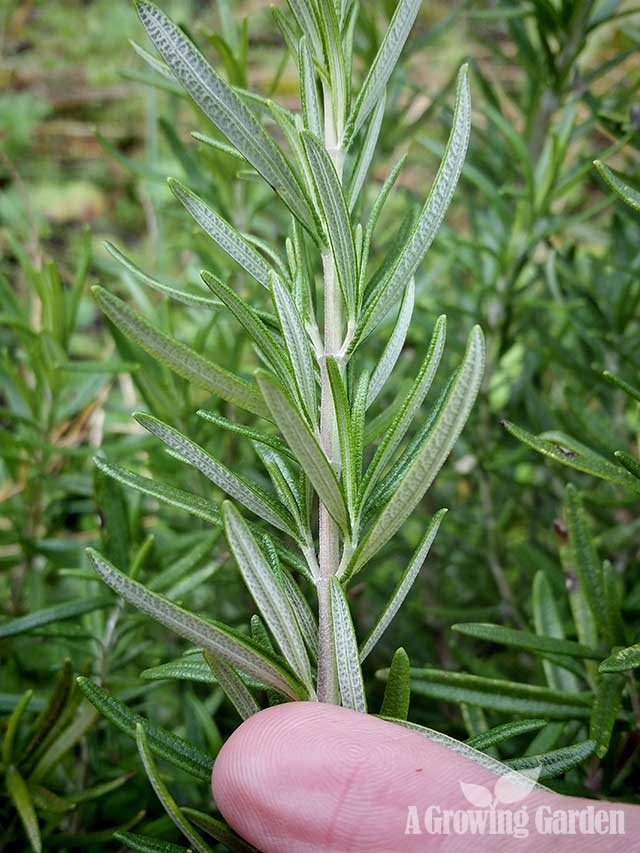
Cut the rosemary stems with clean scissors or pruning shears.
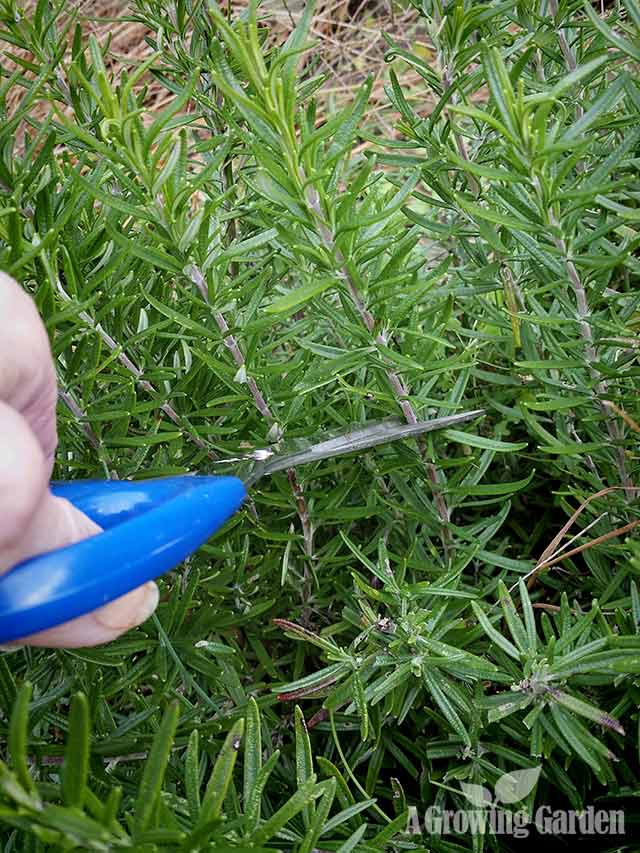
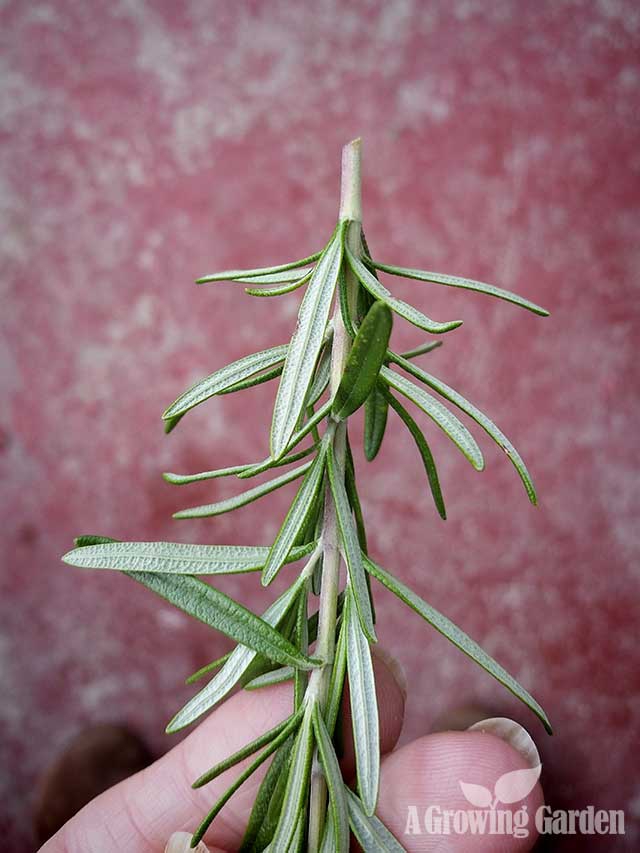
Remove the leaves from the bottom 1-2 inches of the stem. Removing the bottom leaves is important because the new roots will form where the leaves were! You can pinch the leaves off with your thumb and forefinger, or just slide you fingers down the sides of the rosemary stem to remove the leaves.
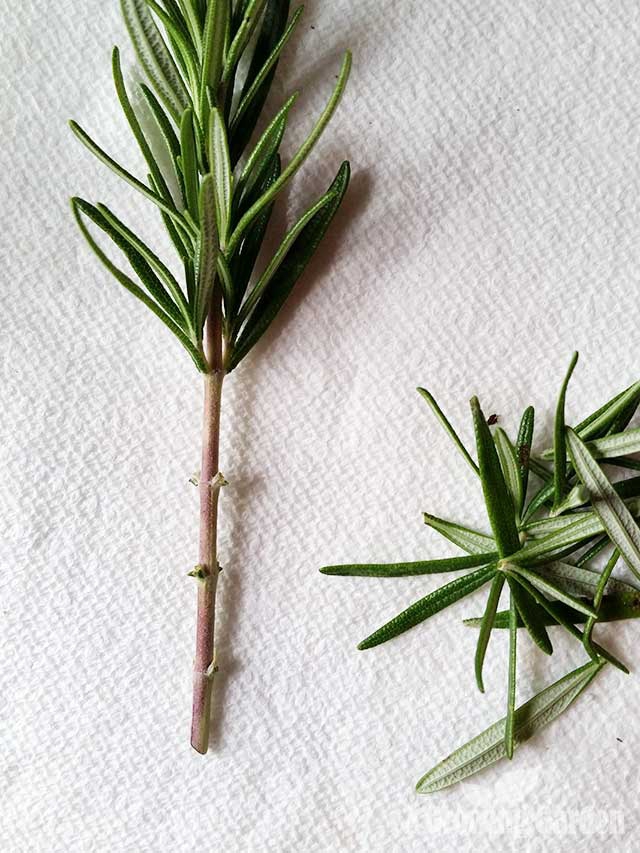
Prepare your planting container. I used 4 inch styrofoam cups for my rosemary cuttings. I have a bunch of these cups that I've used over the years for plants and seedlings -- they last forever and can be used over and over and over again!
Fill your container with your planting medium. I used a mixture of peat and perlite today (heavy on the perlite). I've also rooted cuttings in pure perlite before and that works well. Alternatively, you can use a mixture of sand, perlite, vermiculite, and/or compost or potting soil. Whatever planting medium you decide to use, you'll want to be sure that it is very well draining... the main thing that will kill cuttings is too much water!

Water your planting medium well and create a hole in it for each cutting. I used an old pencil here to make the hole, but you can use pretty much anything you have around -- a chopstick, a small stick, etc.

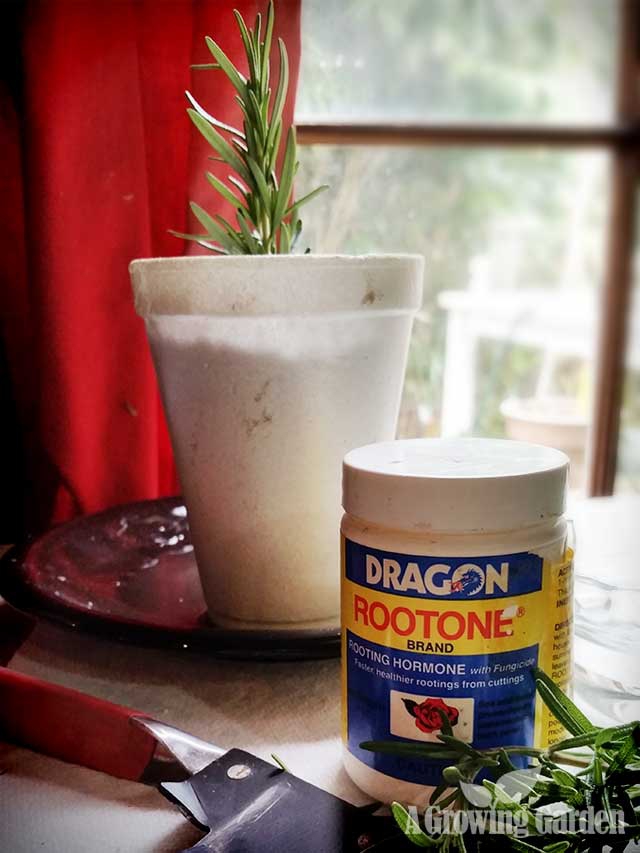
Dip the end of your rosemary cutting into rooting hormone.
This step is optional, but I usually have better results rooting cuttings when I use a rooting hormone. Rooting hormone comes in both powder and liquid form. I'm using powder rooting hormone here, but you can also use liquid hormone.
**It should be noted that in powder or liquid form, rooting hormone is poisonous and should be handled with extreme care!**

Be sure to cover the end of your stem cutting completely in the rooting hormone. Tap off any excess rooting hormone back into the container. Again, remember that rooting hormone should be handled with care -- be sure not to breath it, touch it, and/or spill it.

Place the rosemary cutting into the hole you created previously. Be careful that the rooting hormone powder doesn't get wiped off as you place the stem into the hole.
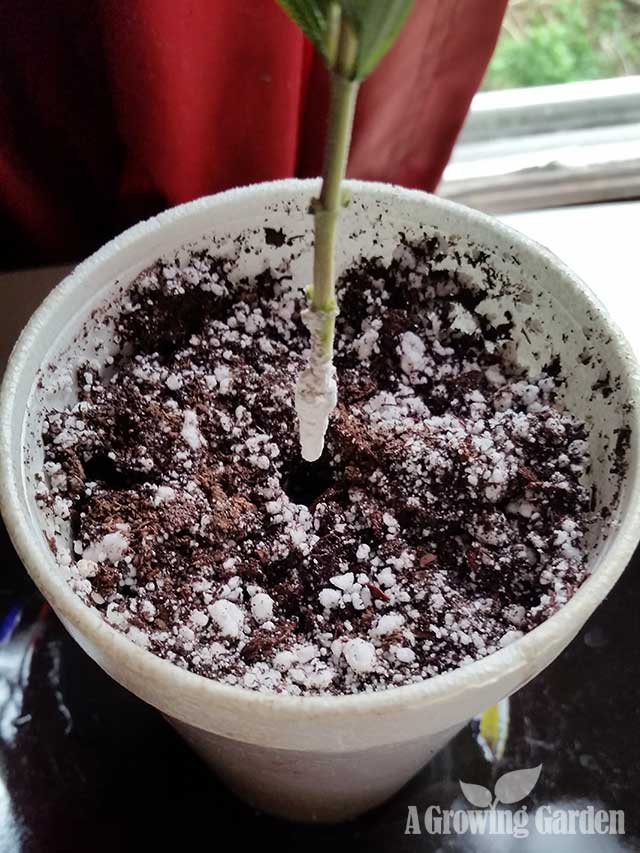

Gently firm the soil around the stem with your fingers and place the cutting out of direct sunlight for a week or 2.

You can also cover the cutting and container with a clear plastic bag -- this will help to optimize humidity (which is good for cuttings). Keep your cuttings moist, but don't let them sit in water.
After a few weeks, your cuttings should start growing roots. Once they start growing, you can separate them into individual containers, plant them in potting soil, and move them into brighter light.
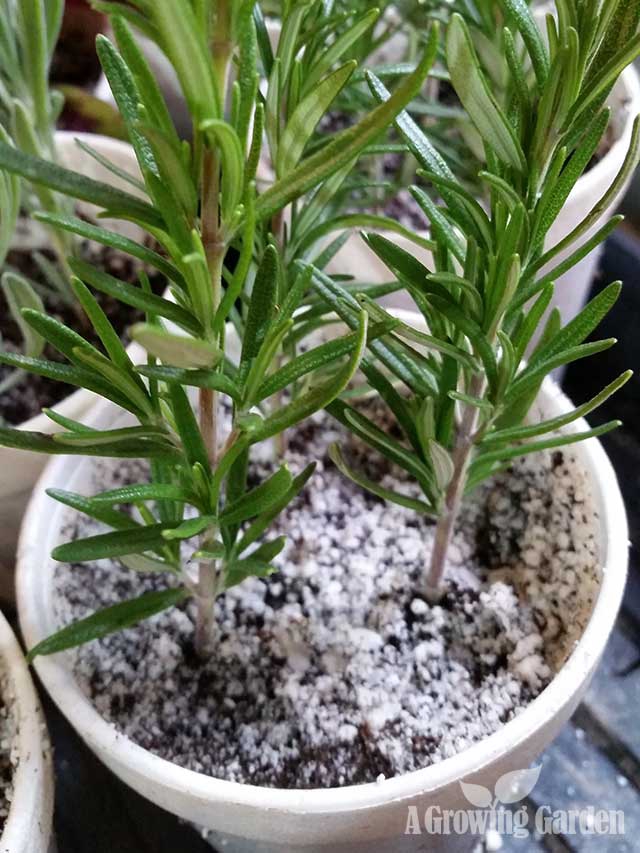
And, that's it! Propagating rosemary from cuttings is a super easy and cheap way to create a lot of new rosemary plants! After all, you can never have too much rosemary, right?












Join the Conversation!